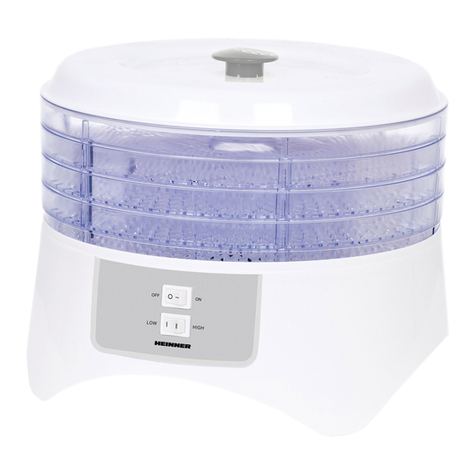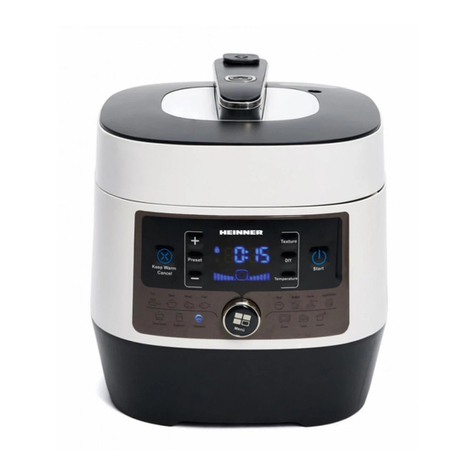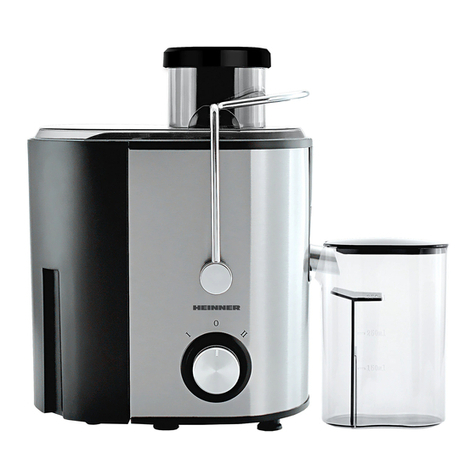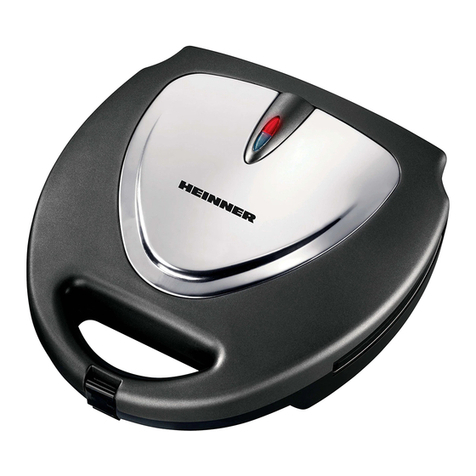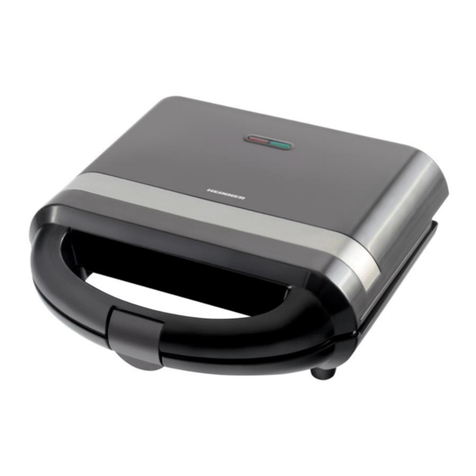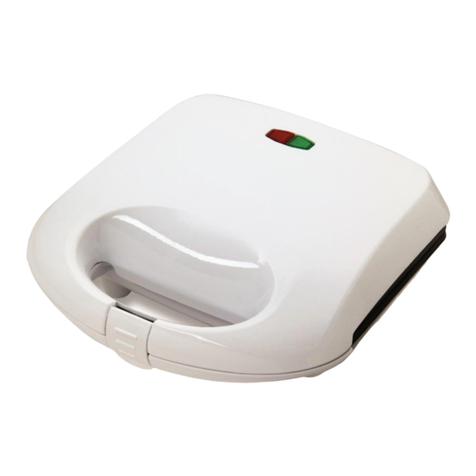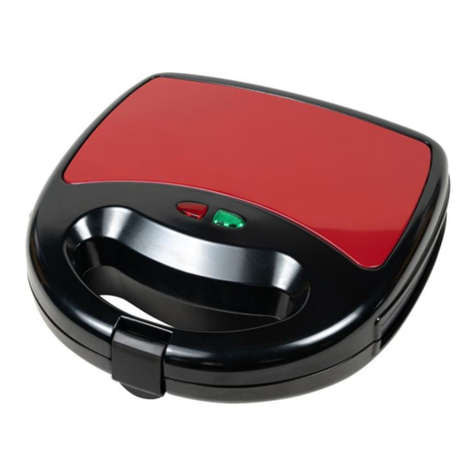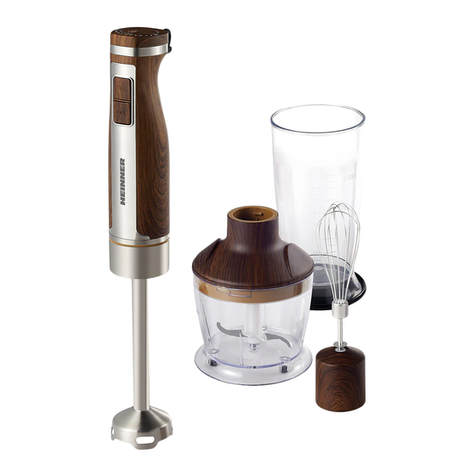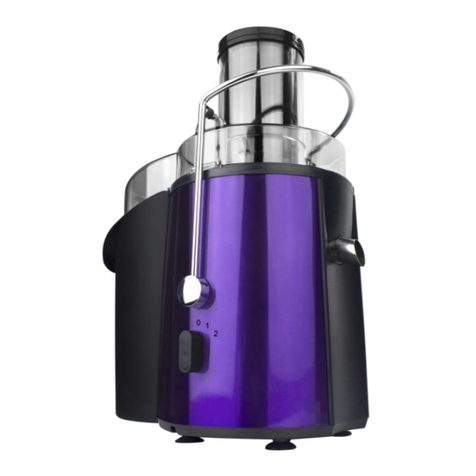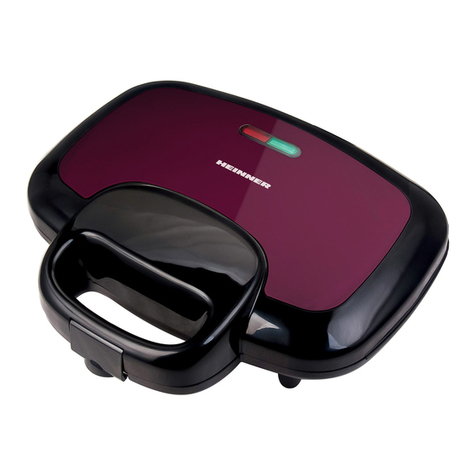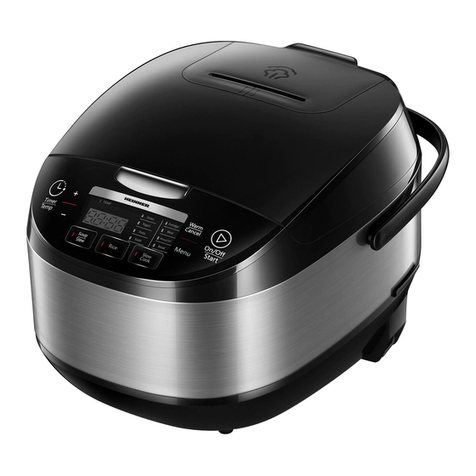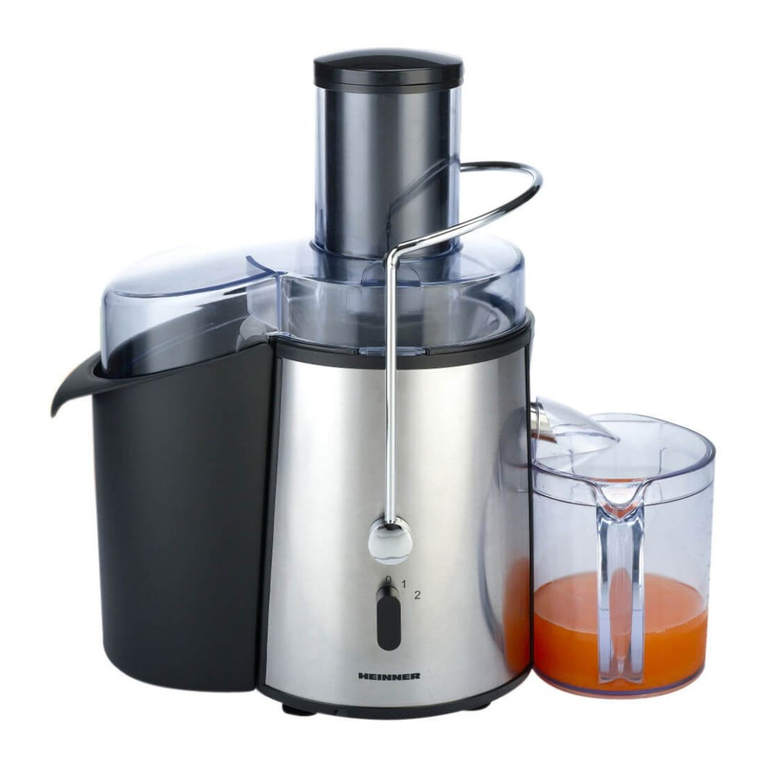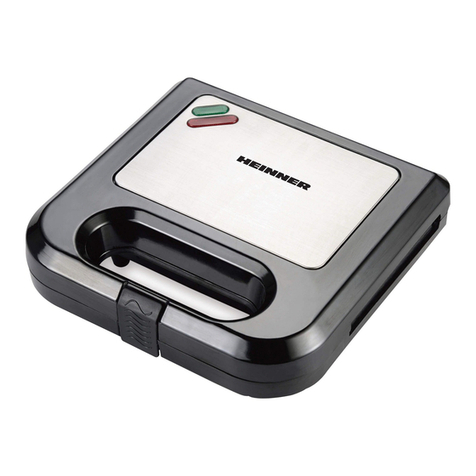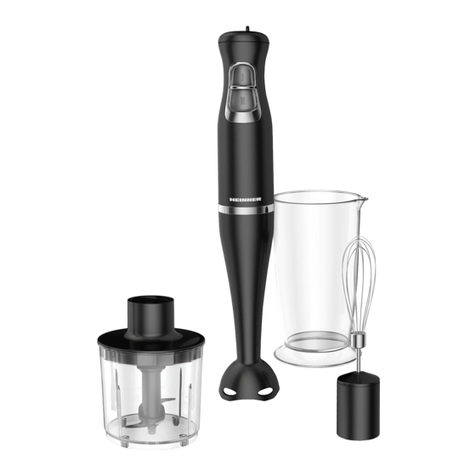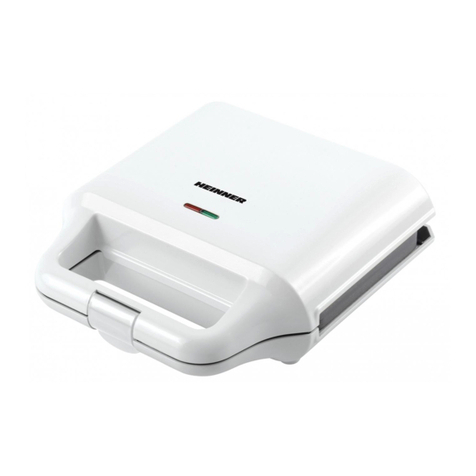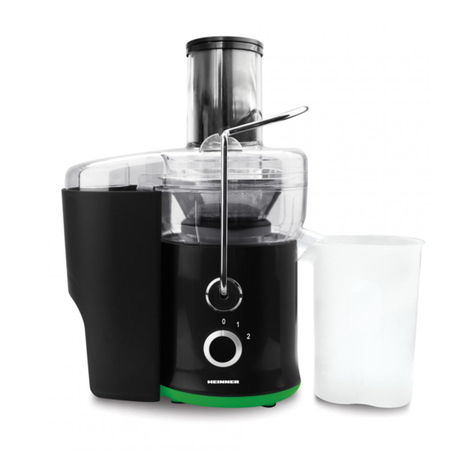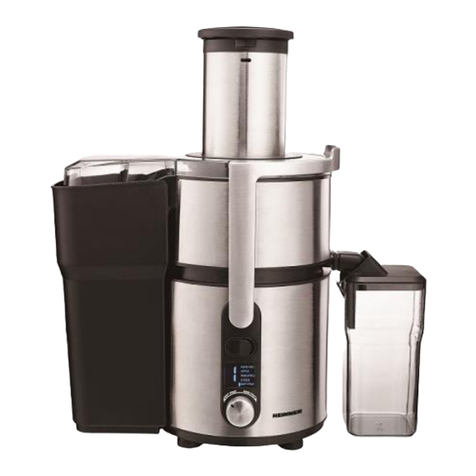
www.heinner.com 1000W, 50/60 Hz, 220-240V
5
➢
•
Start the appliance by turning the On/Off button to position "1" (low speed) or position "2" (high
speed).
• The low speed setting is suitable for juicing soft fruits and vegetables.
• The high speed setting is suitable for juicing harder fruits and vegetables.
•
Feed the selected fruits and/or vegetables into the appliance through the funnel a little at a time,
pushing them down using the tamper (1).
• Make sure that you turn the tamper so that the groove in the tamper fits into the funnel properly.
• Long vegetables such as carrots should be fed into the funnel pointy end first.
•
Press the fruits and/or vegetables gently with the funnel. Too much presser reduces the amount of
juice extracted and can damage the appliance.
•
Stop the appliance before removing the tamper to add more fruit/vegetables in order to avoid to avoid
splashes.
• Keep an eye on the fruit pulp holder and stop juicing before the holder becomes too full.
• Always turn off the power by turning the "On/Off" button to "0" position before taking off the lid.
•
Please note: Do not leave the appliance running for more than 3 minutes at a time. If the appliance
has been running for 3 minutes, allow it to cool down for 20 minutes before you use it again.
➢Tips:
•
If you line the fruit pulp holder with a plastibag before using the appliance, it will be easier to clean
the appliance.
• Use fresh fruits and vegetables – they contain the most juice.
•
Good candidates for juicing include pineapple, apples, cucumbers, celery, carrots, spinach, melons,
tomatoes and most citrus fruits.
•
The various varieties of apple yield juice with different flavors and consistency. Experiment with
different combinations to find your own favorite.
•
Leafy green vegetables such as cabbage and spinach can be juiced. Roll the leaves into cylinders of an
appropriate size before feeding them into the funnel.
•
Fibrous fruits and vegetables as well as those with very firm flesh such as bananas, mangoes, papayas
and avocadoes are not well-suited to juicing, as the result is often mashed fruit instead of juice.
•
All types of juice should be consumed right after juicing, as fresh juice quickly looses important
nutrients when exposed to the oxygen in the air. Taste can also be affected.
•
Pure apple juice turns brown quickly when exposed to air. To prevent discoloration, serve apple juice
immediately after juicing or add a little lemon juice.
•Remember that fruit pulp can be used in cakes, vegetable lasagne, muffins, etc.








